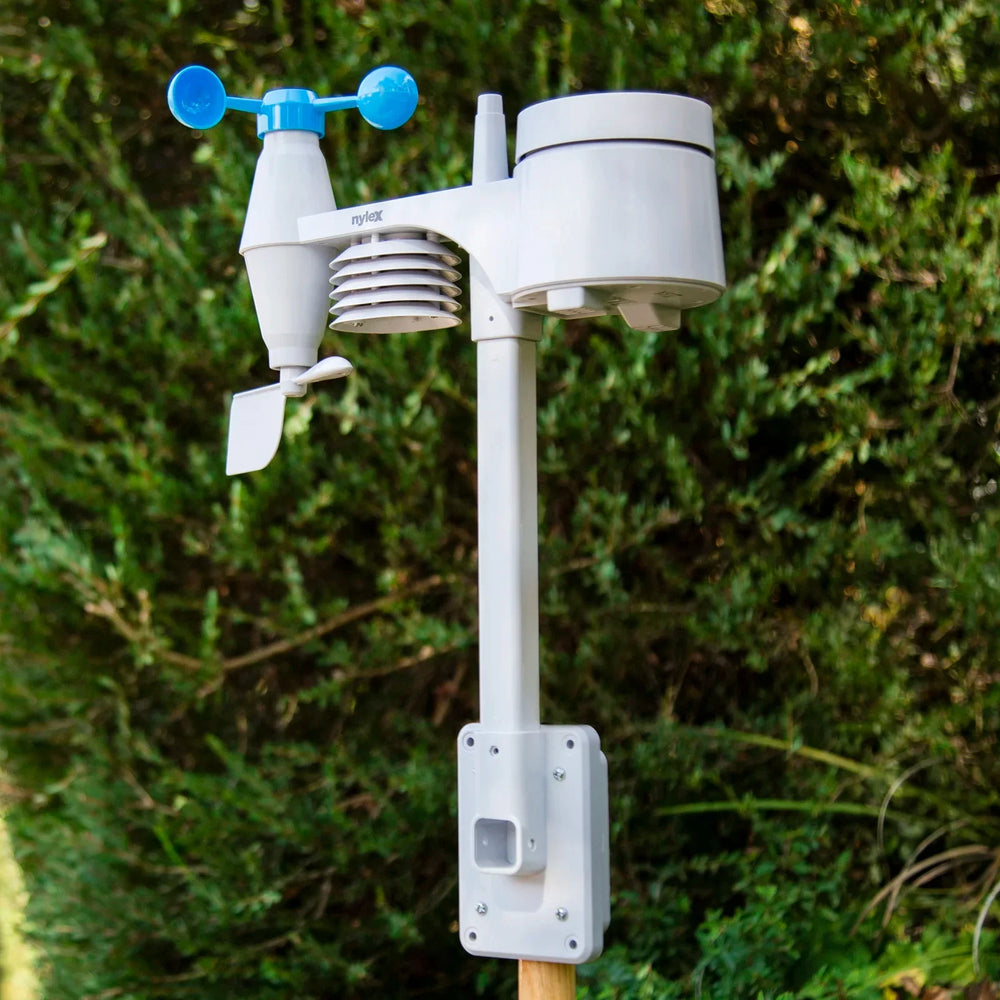The Best Time of Day to Water Your Garden (and Why it Matters)
Learn the best time of day to water your garden for healthier plants, less wa...
Read Article
In the pursuit of a thriving garden, knowledge is power, and what better way to acquire knowledge than tapping into the wealth of information provided by a weather station? Modern technology has made it possible for gardeners to enhance their green spaces with the help of real-time weather data. We’ll explore how to use a weather station to maximise the health and vitality of your garden.
The Nylex Weather Station Plus allows you to monitor your home and backyard weather conditions on a large LCD console. It monitors the indoor and outdoor temperature and humidity records, and wind speed as well as displays the time, date, and moon phase. It also has a unique feature called FEELS LIKE which utilises the outside temperature and wind speed which factors the wind chill to give a FEELS LIKE temperature reading.

Choose an optimal location for your weather station. Ensure it’s placed in an open area away from any trees or overhanging structures that may affect readings. Also, make sure that the unit receives plenty of ventilation and is not sheltered from the wind, and avoid air vents or surfaces that may influence temperature.
The Nylex Weather Station Plus allows you to keep a close eye on temperature variations. Use temperature data to guide decisions on plant selection, placement, and the implementation of protective measures during extreme conditions.
Humidity plays a crucial role in plant health. High humidity may increase the risk of fungal diseases, while low humidity may lead to dehydration. Monitor humidity levels to adjust your watering routine and implement measures like mulching to retain soil moisture.

If your weather station indicates significant rainfall, adjust irrigation accordingly to prevent overwatering. This not only conserves water but also prevents waterlogged soil and potential plant diseases.
Wind can accelerate evaporation, affecting soil moisture levels. Consider windbreaks or adjust watering schedules to account for increased moisture loss during windy periods.
This function allows you to identify trends, understand your garden’s microclimate, and make more informed decisions in the future. Analysing historical data helps refine your gardening strategies over time.
Incorporating a weather station into your gardening toolkit gives you invaluable insights into your garden’s unique environmental conditions. By leveraging real-time data, you can make informed decisions that optimise plant health, conserve resources, and foster a garden that thrives in harmony with nature’s rhythms.